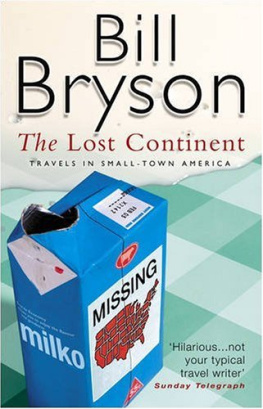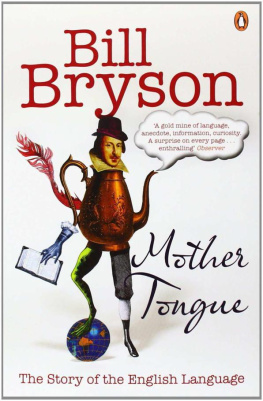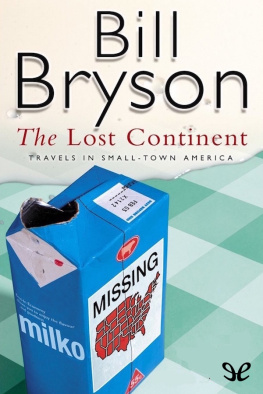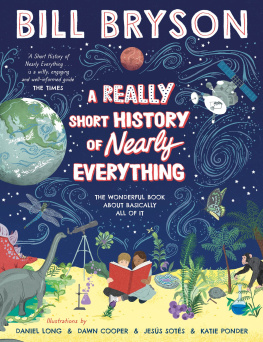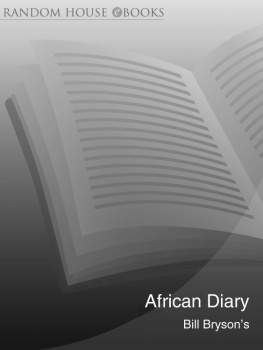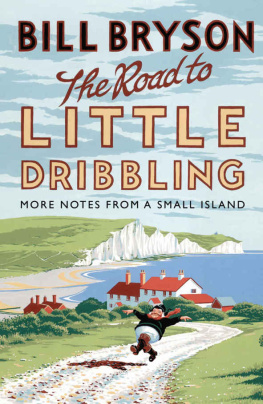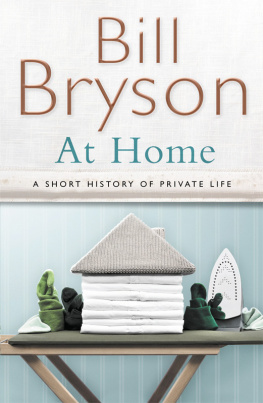Bill Bryson - At Home
Here you can read online Bill Bryson - At Home full text of the book (entire story) in english for free. Download pdf and epub, get meaning, cover and reviews about this ebook. genre: History. Description of the work, (preface) as well as reviews are available. Best literature library LitArk.com created for fans of good reading and offers a wide selection of genres:
Romance novel
Science fiction
Adventure
Detective
Science
History
Home and family
Prose
Art
Politics
Computer
Non-fiction
Religion
Business
Children
Humor
Choose a favorite category and find really read worthwhile books. Enjoy immersion in the world of imagination, feel the emotions of the characters or learn something new for yourself, make an fascinating discovery.

- Book:At Home
- Author:
- Genre:
- Rating:4 / 5
- Favourites:Add to favourites
- Your mark:
- 80
- 1
- 2
- 3
- 4
- 5
At Home: summary, description and annotation
We offer to read an annotation, description, summary or preface (depends on what the author of the book "At Home" wrote himself). If you haven't found the necessary information about the book — write in the comments, we will try to find it.
At Home — read online for free the complete book (whole text) full work
Below is the text of the book, divided by pages. System saving the place of the last page read, allows you to conveniently read the book "At Home" online for free, without having to search again every time where you left off. Put a bookmark, and you can go to the page where you finished reading at any time.
Font size:
Interval:
Bookmark:
ALSO BY BILL BRYSON
The Lost Continent
Mother Tongue
Neither Here Nor There
Made in America
Notes from a Small Island
A Walk in the Woods
Im a Stranger Here Myself
In a Sunburned Country
Brysons Dictionary of Troublesome Words
Bill Brysons African Dictionary
A Short History of Nearly Everything
A Short History of Nearly Everything: Special Illustrated Edition
The Life and Times of the Thunderbolt Kid
Brysons Dictionary for Writers and Editors


DOUBLEDAY
Copyright 2010 by Bill Bryson
All rights reserved. Published in the United States by Doubleday, a division of Random House, Inc., New York.
www.doubleday.com
DOUBLEDAY and the DD colophon are registered trademarks of Random House, Inc.
Originally published in Great Britain by Doubleday, an imprint of Transworld Publishers, a Random House Group Company, London.
Library of Congress Cataloging-in-Publication Data
Bryson, Bill.
At home : a short history of private life / Bill Bryson.
p. cm.
1. DwellingsPsychological aspects. 2. DwellingsEnvironmental aspects. 3. RoomsPsychological aspects. 4. RoomsEnvironmental aspects. I. Title.
GT165.5.B79 2010
643.1dc22
2010004008
eISBN: 978-0-385-53359-1
v3.1_r1
To Jesse and Wyatt
CONTENTS
Cover
Other Books by This Author
Title Page
Copyright
Dedication
INTRODUCTION
Chapter I THE YEAR
Chapter II THE SETTING
Chapter III THE HALL
Chapter IV THE KITCHEN
Chapter V THE SCULLERY AND LARDER
Chapter VI THE FUSE BOX
Chapter VII THE DRAWING ROOM
Chapter VIII THE DINING ROOM
Chapter IX THE CELLAR
Chapter X THE PASSAGE
Chapter XI THE STUDY
Chapter XII THE GARDEN
Chapter XIII THE PLUM ROOM
Chapter XIV THE STAIRS
Chapter XV THE BEDROOM
Chapter XVI THE BATHROOM
Chapter XVII THE DRESSING ROOM
Chapter XVIII THE NURSERY
Chapter XIX THE ATTIC
ACKNOWLEDGMENTS
BIBLIOGRAPHY
ILLUSTRATION CREDITS
About the Author
INTRODUCTION
Some time after my wife and I moved into a former Church of England rectory in a village of tranquil anonymity in Norfolk, in the easternmost part of England, I had occasion to go up into the attic to look for the source of a slow but mysterious drip. As there are no stairs to the attic in our house, the process involved a tall stepladder and much unseemly wriggling through a ceiling hatch, which was why I had not been up there before (or have returned with any enthusiasm since).
When I did finally flop into the dusty gloom and clambered to my feet, I was surprised to find a secret door, not visible from anywhere outside the house, in an external wall. The door opened easily and led out onto a tiny rooftop space, not much larger than a tabletop, between the front and back gables of the house. Victorian houses are often a collection of architectural bewilderments, but this one was starkly unfathomable: why an architect had troubled to put in a door to a space so lacking in evident need or purpose was beyond explanation, but it did have the magical and unexpected effect of providing the most wonderful view.
It is always quietly thrilling to find yourself looking at a world you know well but have never seen from such an angle before. I was perhaps fifty feet above the ground, which in mid-Norfolk more or less guarantees a panorama. Immediately in front of me was the ancient flint church to which our house was once an adjunct. Beyond, down a slight incline and slightly separate from church and rectory, was the village to which both belonged. In the distance in the other direction was Wymondham Abbey, a heap of medieval splendor commanding the southern skyline. In a field in the middle distance a tractor rumbled and drew straight lines in the soil. All else in every direction was quiet, agreeable, timeless English countryside.
What gave all this a certain immediacy was that just the day before I had walked across a good part of this view with a friend named Brian Ayers. Brian had just retired as the county archaeologist, and may know more about the history and landscape of Norfolk than anyone alive. He had never been to our village church, and was eager to have a look. It is a handsome and ancient building, older than Notre Dame in Paris and about the same vintage as Chartres and Salisbury cathedrals. But Norfolk is full of medieval churchesit has 659 of them, more per square mile than anywhere else in the worldso any one is easily overlooked.
Have you ever noticed, Brian asked as we stepped into the churchyard, how country churches nearly always seem to be sinking into the ground? He pointed out how this one stood in a slight depression, like a weight placed on a cushion. The church foundations were about three feet below the churchyard around it. Do you know why that is?
I allowed, as I often do when following Brian around, that I had no idea.
Well, it isnt because the church is sinking, Brian said, smiling. Its because the churchyard has risen. How many people do you suppose are buried here?
I glanced appraisingly at the gravestones and said, I dont know. Eighty? A hundred?
I think thats probably a bit of an underestimate, Brian replied with an air of kindly equanimity. Think about it. A country parish like this has an average of 250 people in it, which translates into roughly a thousand adult deaths per century, plus a few thousand more poor souls that didnt make it to maturity. Multiply that by the number of centuries that the church has been there and you can see that what you have here is not eighty or a hundred burials, but probably something more on the order of, say, twenty thousand.
This was, bear in mind, just steps from my front door. Twenty thousand? I said.
He nodded matter-of-factly. Thats a lot of mass, needless to say. Its why the ground has risen three feet. He gave me a moment to absorb this, then went on: There are a thousand parishes in Norfolk. Multiply all the centuries of human activity by a thousand parishes and you can see that you are looking at a lot of material culture. He considered the several steeples that featured in the view. From here you can see into perhaps ten or twelve other parishes, so you are probably looking at roughly a quarter of a million burials right here in the immediate landscapeall in a place that has never been anything but quiet and rural, where nothing much has ever happened.
All this was Brians way of explaining how a bucolic, lightly populated county like Norfolk could produce twenty-seven thousand archaeological finds a year, more than any other county in England. People have been dropping things here for a long timesince long before England was England. He showed me a map of all the known archaeological finds in our parish. Nearly every field had yielded somethingNeolithic tools, Roman coins and pottery, Saxon brooches, Bronze Age graves, Viking farmsteads. Just beyond the edge of our property in 1985 a farmer crossing a field found a rare, impossible-to-misconstrue Roman phallic pendant.
To me that was, and remains, an amazement: the idea of a man in a toga, standing on what is now the edge of my land, patting himself all over, and realizing with consternation that he has lost his treasured keepsake, which then lay in the soil for seventeen or eighteen centuriesthrough endless generations of human activity; through the comings and goings of Saxons, Vikings, and Normans; through the rise of the English language, the birth of the English nation, the development of continuous monarchy and all the restbefore finally being picked up by a late-twentieth-century farmer, presumably with a look of consternation of his own.
Next pageFont size:
Interval:
Bookmark:
Similar books «At Home»
Look at similar books to At Home. We have selected literature similar in name and meaning in the hope of providing readers with more options to find new, interesting, not yet read works.
Discussion, reviews of the book At Home and just readers' own opinions. Leave your comments, write what you think about the work, its meaning or the main characters. Specify what exactly you liked and what you didn't like, and why you think so.

